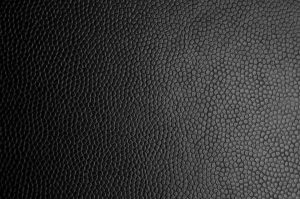Print Marketing 101: Creating Effective Brochures and Flyers
In today’s digital world, print marketing has taken a back seat, but it should not be overlooked, because brochures and flyers can still have a significant impact on your target audience. Print marketing has been used for decades, and it has got better with time, unlike the ever-changing algorithms of digital marketing. The printed word can be trusted and has a certain appeal to a particular segment of the audience. In this article, we will discuss how to create effective brochures and flyers for your business.
Headline – Why Brochures and Flyers Still Matter
– Despite the rise of digital marketing, print marketing still holds its place in the market. Brochures and flyers are popular and can be used in many venues. They can be handed out at trade shows, conferences, events, or even mailed to potential customers. They are tangible and can be kept and referred back to later. They also provide a visual representation of your brand and services which can be important for the audience.
Headline – Define Your Purpose and Audience
– Before creating your brochure or flyer, define your purpose and audience. What services are you offering, and who are your target customers? Align your messaging to their needs and preferences. For instance, if your audience is young adults, make sure your design appeals to them. If it’s corporate, make sure it’s sleek and professional.
Headline – Get Creative with the Design
– The design of a brochure or flyer is the first thing that draws the audience’s attention. Make sure you have an eye-catching and professional design. Use bold colors and simple, easy-to-read fonts. Keep the layout consistent throughout the brochure or flyer. Highlight the key messages that you want to convey.
Headline – Include Eye-Catching Visuals
– The visuals in your brochure or flyer should reflect your brand and services. Use high-quality images that are relevant to your audience. Don’t forget to include your logo and relevant contact information.
Headline – Highlight Benefits, Not Features
– Your brochure or flyer should focus on the benefits of your services rather than listing all of its features. Talk about how your services can help solve the audience’s problem. Use storytelling to keep the audience engaged.
Headline – Use a Call to Action
– A call to action (CTA) is an essential component of your brochure or flyer. It tells the audience what to do next. It can be as simple as asking them to visit your website or call your office. Make sure it’s clear and easy to understand.
Headline – Choose the Right Paper Stock and Finishing
– The paper stock and finishing of your brochure or flyer make a difference. Choose a high-quality paper that is thick and durable. You can also add finishing touches such as UV coating or embossing to make it stand out.
Headline – Keep it Concise
– Make sure your brochure or flyer is concise and to the point. Keep the messaging short and sweet. Avoid long paragraphs and use bullet points where possible. Use simple language that is easy to understand.
Headline – Proofread and Edit
– Before printing your brochure or flyer, make sure to proofread and edit it. Check for spelling and grammar errors. Make sure the design is consistent, and the messaging is clear. You want to make sure that everything is perfect before sending it to print.
Headline – FAQs
Q: How can I measure the success of my brochure or flyer?
A: You can measure the success of your brochure or flyer by tracking the number of calls or website visits that it generates.
Q: Can I include testimonials in my brochure or flyer?
A: Yes, testimonials can be a powerful tool to showcase how your services have helped other clients.
Q: Should I use glossy or matte paper for my brochure or flyer?
A: It depends on the desired effect. Glossy paper gives a shiny, reflective finish, while matte paper has a more subtle, professional look.
Q: How many pages should my brochure be?
A: It depends on how much information you want to convey. A tri-fold brochure is a standard size and is usually enough to convey your message.
Q: Can I include discounts or promotional offers in my brochure or flyer?
A: Yes, discounts or promotional offers can be a powerful tool to attract more customers. Just make sure they are easily visible and have a clear expiration date.
Conclusion:
Print marketing is still an effective way to reach your target audience. Brochures and flyers are an essential component of your marketing strategy. Creating an effective brochure or flyer requires you to define your purpose and audience, get creative with the design, use eye-catching visuals, highlight benefits, not features, use a call to action, choose the right paper stock and finishing, keep it concise, and proofread and edit before printing. With these tips, you can create a brochure or flyer that will grab the audience’s attention and deliver results.





